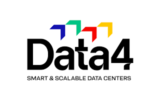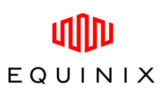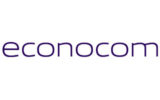Data centers’ energy and environmental performance: striving for excellence
The energy and environmental performance indicators of data centers, and of digital technology more generally, are as numerous as they are varied. In addition to the well-known PUE, there are other, more global and more granular indicators that offer possibilities for continuous improvement specific to each operator. With recent changes in the regulation of electricity tax reductions, an increasing number of operators should adopt a holistic approach in the future.
The energy and environmental performance of a data center…
An initial approach consists of a global assessment of a data center’s energy and environmental performance in three aspects: the technical environment, the IT equipment and the hosted IT services.
In terms of technical equipment, the PUE (Power Usage Effectiveness) is undoubtedly the most widely used indicator at this time. The PUE is the ratio between the energy consumed by the IT and the total energy the data center uses. In other words, it is a ratio that measures the energy efficiency of the infrastructure used for IT production. There is also the CUE (Carbon Usage Effectiveness, the ratio between the CO2 equivalent of the energy consumption of the installation and the total energy consumption of the IT). Within this scope, these KPIs remain of limited use because they only take into account energy consumption. For a more global approach, we must take into account any recovery of the free heat produced or the share of renewable energy used (REF).
Finally, we can define energy and environmental performance indicators for the digital services delivered by the data center’s IT equipment. This involves defining indicators related to a functional unit specific to the service delivered, such as a virtual machine (VM), for example.
…differs from the environmental impact of the information system
However, the measurements within the data center do not allow us to assess the energy and environmental impact of the IT services hosted there. In addition to the overall data center measurements and indicators, it is therefore advisable to precisely measure the impact of each service provided within the information system, taking into account the entire life cycle of the equipment supporting this service. This involves calculating the impact for each piece of IT equipment or infrastructure, for example the cooling system, LVDB, UPS, generators and servers, from the mining of raw materials until recovery at the end of the equipment’s lifespan, including its manufacture, distribution and use.
For information, assuming a 600 m² data center consuming more than 11 GWh/year, the IT equipment represents 75% of the data center’s environmental footprint over its entire life cycle.
This approach, based on assessing the environmental impacts over the entire lifecycle, is an important aid to decision-making for IT departments. For example, it could lead to the decision to virtualize an application to limit its energy consumption, to redefine the equipment replacement strategy or to delete certain resource-hungry applications that are no longer used.
How to measure your energy and environmental performance
Whatever approach your company choses, given the sheer number of indicators, it is up to you to determine what must be monitored and measured, the methods you use to monitor, measure, analyze and evaluate the indicators and how often you do so.
The challenge in measuring energy and environmental performance is to adjust the metrology via measuring instruments that are as closely suited to the equipment as possible. This information will be used as input data to calculate the KPIs. The goal is to make it easy to automatically report data to facilitate the analysis of results instead of carrying out manual readings which are less reliable and more time-consuming for the teams.
The metrology implemented in data centers is a management tool and not an end in itself; it is a matter of defining target objectives and monitoring whether they are achieved or, conversely, identifying any discrepancies in a process of continuous improvement.
Adopt continuous improvement approaches and best practice benchmarks
One last approach to assess the energy and environmental performance of a data center is holistic with a view to continuous improvement. In this case, the objective is to “compare oneself with oneself” over time, to strive for energy and environmental excellence. To achieve this, organizations have at their disposal the standards ISO 14001 (environmental management systems), ISO 50001 (energy management), ISO 30134 (which defines key performance indicators for information technologies and data centers) and EN 50600 (Information technology – data center facilities and infrastructures). Finally, the least restrictive but nonetheless profitable EU Code of Conduct for Data Centers is one of the benchmarks that many companies use.
Whether global or more granular, all these energy and environmental performance measures are based on a more or less voluntary process of continuous improvement in each organization and each data center.
However, the 2021 finance law will change data centers’ energy taxation on January 1, 2022. From then on, data centers must implement an energy management system and adhere to an official benchmark of good practices for energy use to be eligible for the reduction of the Internal Tax on Final Electricity Consumption. Thus, more and more data center operators should engage in these holistic approaches of measurement and continuous improvement in their energy and environmental performance in the coming years.
By Soumia Hattali, Responsible Digital Consultant, APL.




















